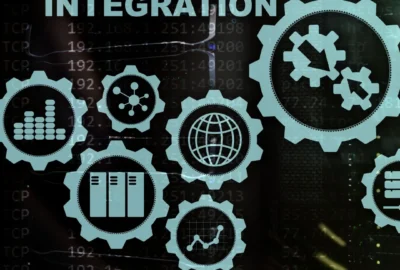Let’s be honest: Compliance Reporting isn’t anyone’s favorite task. It’s slow. It’s stressful. And if something slips through the cracks, the consequences aren’t just inconvenient—they’re expensive.
For operations leaders, financial teams, private lenders, and wealth managers, the real burden isn’t just ticking boxes. It’s the endless cycle of chasing documents, double-checking spreadsheets, and trying to interpret ever-changing regulations—all while trying to keep your team moving forward.
That’s where automating compliance reporting comes in.
By shifting away from manual methods and leaning into smarter, simpler workflows, companies are starting to save time, reduce errors, and breathe a little easier. How to automate compliance reporting to save time and money isn’t just a catchphrase—it’s a strategic move toward faster turnaround, lower costs, and fewer headaches.
So if you’ve ever thought, “There has to be a better way,”—you’re right. Let’s walk through it.
Understanding Compliance Reporting Challenges
Most firms aren’t struggling because they’re careless. They’re struggling because the process itself is overwhelming.
Common Compliance Reporting Challenges
| Challenge | Description | Impact |
|---|---|---|
| Complex regulations | Vary by industry, region, and agency | High time and resource burden |
| Manual data collection | Gathering info from scattered sources | Risk of missing or incorrect data |
| Disconnected teams | Silos slow down collaboration | Delays in report completion |
| Repetitive tasks | Copy-pasting data, formatting reports | Wastes hours of valuable time |
| Lack of transparency | Hard to track who did what | Poor accountability and audit-readiness |
When your compliance reporting process is held together by spreadsheets and email threads, it’s only a matter of time before something goes wrong. And when it does, the cost isn’t just a late report—it’s reputational damage, regulatory penalties, and internal chaos.
The Role of Automation in Streamlining Compliance Reporting
Now imagine this: What if compliance reporting could feel… manageable?
Automation in compliance reporting isn’t about making things more technical. It’s about removing friction. It’s about giving your team the space to focus on real work, not chasing paper trails.
Benefits of Automating Compliance Reporting
| Benefit | Why It Matters |
|---|---|
| Time savings | Reports that once took days can take hours—or less |
| Cost reduction | Fewer hours spent = lower operational costs |
| Fewer errors | Data pulled directly from systems = fewer mistakes |
| Faster audits | Organized data = smoother responses to regulators |
| Happier teams | Less stress = better morale and retention |
Automating compliance reporting doesn’t mean giving up control. It means taking back control from broken, manual systems.
Improve your Finance Processes.
1. Automated Data Collection and Report Generation
One of the biggest bottlenecks in compliance reporting is gathering the right data at the right time. That alone can take hours—or days.
How Data Collection Automation Helps
| Manual Method | Automated Alternative | Time Saved |
|---|---|---|
| Downloading CSVs from 5 platforms | Connected reports pull data live | 2–6 hours/week |
| Copy-pasting into Excel | Pre-built integrations map fields | 50%+ task time reduction |
| Formatting charts manually | Auto-fill templates generate charts | 80% less formatting time |
With report generation software, your team can automatically compile the data into the right formats—no more digging through folders or reinventing templates each month.
2. Leveraging Prebuilt Compliance Controls and Policies
Not everything has to be custom. In fact, using built-in policies and regulatory controls can actually increase compliance while reducing the margin for error.
Let’s say you’re a private lending firm following anti-money laundering requirements. Instead of manually configuring your checks and thresholds, automation tools can give you:
- Prebuilt rule sets aligned to your industry
- Auto-updating policies based on changing regulations
- Easy toggles to apply the right framework
That means fewer meetings, fewer emails, and faster alignment with the rules that matter.
3. Streamlining Workflows with Automation Technology
Compliance isn’t a single task—it’s a series of small steps that can get stuck anywhere.
By structuring workflows and using automation to move documents, assign tasks, and send reminders, you can avoid last-minute chaos.
Workflow Areas You Can Automate
| Workflow Task | Manual Risk | Automated Fix |
|---|---|---|
| Document routing | Lost in inbox threads | Auto-routed to correct reviewer |
| Approval requests | Missed or delayed | Instant alerts + progress tracking |
| Status updates | Manual check-ins | Live dashboards with statuses |
| Deadline reminders | Easily forgotten | Automated email/SMS alerts |
A smoother workflow means fewer things fall through the cracks—and compliance becomes part of your routine, not a crisis.
4. Centralizing Compliance Management for Greater Transparency
When compliance information is scattered—shared drives, inboxes, paper files—it’s nearly impossible to stay on top of it.
That’s why the smartest teams use a single source of truth.
With a central platform, everyone—from legal to finance to ops—can access the same reports, track changes, and understand where things stand in real time.
Benefits of Centralized Compliance Reporting
| Centralized System | Disconnected Process |
|---|---|
| One dashboard for all reports | Dozens of scattered files |
| Full audit trails | No clear ownership |
| Easy handoffs | Confusing back-and-forth |
| Shared visibility | Blind spots and assumptions |
When everyone sees the same picture, you move faster, with less friction—and a lot more confidence.
Realizing the Full Benefits of Automation in Compliance Reporting
Here’s the truth: compliance reporting will never go away. But the stress, confusion, and hours of cleanup work? Those can.
By moving to automated systems, you’re not just solving today’s problems. You’re setting up your organization to handle future growth, regulatory shifts, and increasing complexity—without adding headcount or burning out your staff.
Ongoing benefits include:
- Real-time dashboards to track compliance health
- Alerts for missing or overdue items
- Continuous monitoring without manual oversight
- Easier onboarding of new team members into streamlined processes
Once your system is humming, it stays that way—with less effort.
Industry-Specific Applications of Automated Compliance Reporting Solutions
Different industries, same problem. But the solutions are adaptable.
Real-World Use Cases
| Industry | Compliance Reporting Need | Automation Impact |
|---|---|---|
| Education | FERPA reporting | Prebuilt templates + data sync from SIS |
| Energy | NERC CIP reporting | Real-time tracking + audit trails |
| Private lending | AML/KYC compliance | Automated checks + centralized records |
| Wealth management | SEC disclosures | Scheduled reporting + data pulls from CRM |
| Healthcare | HIPAA activity logs | Continuous monitoring + quick exports |
Each of these examples shows how automating compliance reporting isn’t just a dream—it’s already happening. And it’s changing how teams work.
How To Automate Compliance Reporting To Save Time and Money: 5 Simple Steps
Step 1: Identify What You’re Reporting and Why
Before you can automate anything, get clear on what reports you actually need. Are you reporting to regulators? Investors? Internal leadership?
Create a checklist of:
- Required reports and due dates
- The specific data each report needs
- Who’s responsible for each piece
Why it matters: Without this step, automation just adds confusion. With it, your process becomes easier to map and improve.
Step 2: Map Where the Data Lives
Now, figure out where all that compliance data is stored. It might be in your:
- CRM (e.g., client info)
- Core financial system (e.g., transactions)
- Spreadsheets (e.g., reconciliations)
- Internal docs (e.g., policy updates)
Pro tip: You don’t need a technical team to start here. Just list the tools or files your team already uses.
Step 3: Use Smart Tools to Pull and Organize the Data
Here’s where automation begins: instead of collecting data by hand, use tools that connect directly to your existing systems. Many platforms now let you:
- Pull data from spreadsheets, emails, or databases
- Automatically drop it into prebuilt templates
- Generate reports without reformatting everything
Look for tools with:
- Drag-and-drop dashboards
- Built-in report formats for your industry
- Easy filtering and export features
Table: Manual vs. Automated Data Collection
| Task | Manual | Automated |
|---|---|---|
| Gathering client data | Copy/paste from files | Pulled from CRM |
| Building reports | Format from scratch | Auto-filled templates |
| Formatting tables | Manual styling | Standardized formats |
Step 4: Build a Repeatable Workflow
Think about the full reporting cycle—from data entry to review to submission. Then:
- Set automatic reminders for deadlines
- Route documents to reviewers with one click
- Use approval flows so nothing gets missed
Example Tasks to Automate:
- Notify compliance officer when data is ready
- Auto-route draft reports for review
- Archive final reports for audit logs
Table: Workflow Automation Opportunities
| Workflow Step | Traditional Process | Smarter Automation |
|---|---|---|
| Initial review | Email chains | Auto-notify reviewers |
| Approvals | Manual sign-off | One-click approvals |
| Submission logs | Manually saved | Auto-archived with timestamp |
Step 5: Keep Everything in One Place
Choose a platform (or even just a shared folder) where all compliance reports, templates, deadlines, and conversations are stored.
This gives you:
- Visibility across teams
- Instant access during audits
- Fewer mistakes or repeated work
Table: Centralized vs. Scattered Compliance Management
| Criteria | Centralized | Scattered |
|---|---|---|
| Team access | Everyone sees updates | Only some do |
| Audit trail | Easy to track | Hard to trace |
| Time spent looking for docs | Low | High |
Conclusion: A Simpler Path Forward
If compliance reporting is something your team dreads, you’re not alone. But it doesn’t have to be this way.
With smarter systems, clearer workflows, and automated tools that actually fit your operations, you can turn compliance from a burden into a strength.
Fewer delays. Lower costs. A team that isn’t stuck in spreadsheet hell.
The question is no longer whether you can automate compliance reporting—but whether you can afford not to.
How to automate compliance reporting to save time and money starts with one step: choosing to make your process work for you, not against you.
Featured Image: Generated from Canva.



